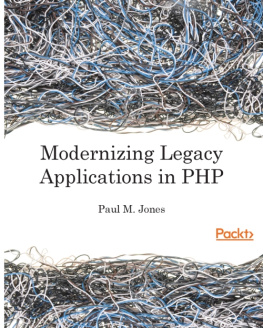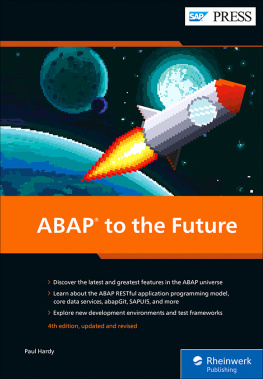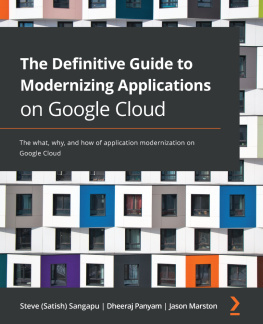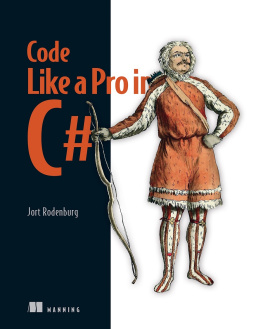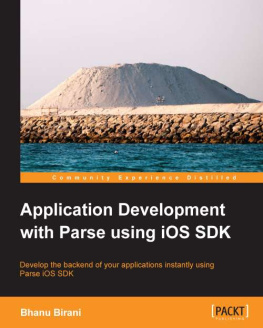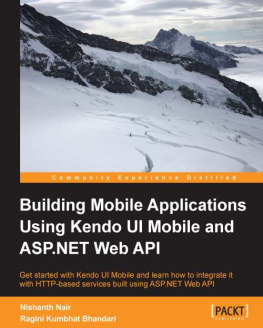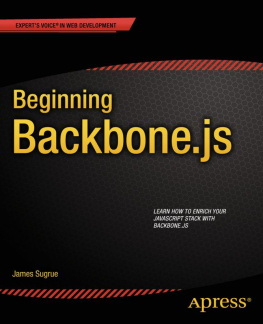Paul M. Jones
Foreword
In early 2012, while attending a popular PHP conference in Chicago, I approached a good friend, Paul Jones, with questions about PSR-0 and autoloading. We immediately broke out my laptop to view an attempt at applying the convention and Paul really helped me put the pieces together in short order. His willingness to jump right in and help others always inspires me, and has gained my respect.
So in August of 2012 I heard of a video containing a talk given by Paul at the Nashville PHP User Group, and was drawn in. The talk, It Was Like That When I Got Here: Steps Toward Modernizing A Legacy Codebase , sounded interesting because it highlighted something I am passionate about: refactoring.
After watching I was electrified! I often speak about refactoring and receive inquiries on how to apply it for legacy code rather than performing a rewrite. Put another way, how is refactoring possible in a codebase where includes and requires are the norm, namespaces don't exist, globals are used heavily, and object instantiation runs rampant with no dependency injection? And what if the codebase is procedural?
Paul's focus of modernizing a legacy application filled the gap by getting legacy code to a point where standard refactoring is possible. His step-by-step approach makes it easier for developers to get the bear dancing so continued improving of code through refactoring can happen.
I felt the topic was a must see for PHP developers and quickly fired off an email asking if he'd be interested in flying to Miami and giving the same talk for the South Florida PHP User Group. Within minutes my email was answered and Paul even offered to drive down from Nashville for the talk. However, since I started organizing the annual SunshinePHP Developer Conference to be held February in Miami we decided to have Paul speak at the conference rather than come down earlier.
Fast forward two years later, and here we are in mid-2014. Developing with PHP has really matured in recent years, but it's no secret that PHP's low level of entry for beginners helped create some nasty codebases. Companies who built applications in the dark times simply can't afford to put things on hold and rebuild a legacy application, especially with today's fast paced economy and higher developer salaries. To stay competitive, companies must continually push developers for new features and to increase application stability. This creates a hostile environment for developers working with a poorly written legacy application. Modernizing a legacy application is a necessity, and must happen. Yet knowing how to create clean code and comprehending how to modernize a legacy application are two entirely different things.
Paul and I have been speaking to packed rooms at conferences around the world about modernizing and refactoring. Developers are hungry for knowledge on how to improve the quality of their code and perfect their craft. Unfortunately, we can only reach a small portion of PHP developers using these methods. The time has come for us to create books in hopes of reaching more PHP developers to improve the situation.
I see more and more developers embrace refactoring into their development workflow to leverage methods outlined in my talks and forthcoming book Refactoring 101 . But understanding how to use these refactoring processes on a legacy codebase is not straight forward, and sometimes impossible. The book you're about to read bridges the gap, allowing developers to modernize a codebase so refactoring can be applied for continued enhancement. Many thanks to Paul for putting this together. Enjoy!
Adam Culp
(https://leanpub.com/refactoring101)
About the Author
Paul M. Jones is an internationally recognized PHP expert who has worked as everything from junior developer to VP of Engineering in all kinds of organizations (corporate, military, non-profit, educational, medical, and others). He blogs professionally at www.paul-m-jones.com and is a regular speaker at various PHP conferences.
Paul's latest open-source project is Aura for PHP. Previously, he was the architect behind the Solar Framework, and was the creator of the Savant template system. He was a founding contributor to the Zend Framework (the DB, DB_Table, and View components), and has written a series of authoritative benchmarks on dynamic framework performance.
Paul was one of the first elected members of the PEAR project. He is a voting member of the PHP Framework Interoperability Group, where he shepherded the PSR-1 Coding Standard and PSR-2 Coding Style recommendations, and was the primary author on the PSR-4 Autoloader recommendation. He was also a member of the Zend PHP 5.3 Certification education advisory board.
In a previous career, Paul was an operations intelligence specialist for the US Air Force. In his spare time, he enjoys putting .308 holes in targets at 400 yards.
Acknowledgement
Many thanks to all of the conference attendees who heard my It Was Like That When I Got Here presentation and who encouraged me to expand it into a full book. Without you, I would not have considered writing this at all.
Thank you to Adam Culp, who provided a thorough review of the work-in-progress, and for his concentration on refactoring approaches. Thanks also to Chris Hartjes, who went over the chapter on unit testing in depth and gave it his blessing. Many thanks to Luis Cordova, who acted as a work-in-progress editor and who corrected my many pronoun issues.
Finally, thanks to everyone who bought a copy of the book before it was complete, and especially to those who provided feedback and insightful questions regarding it. These include Hari KT (a long-time colleague on the Aura project), Ron Emaus, Gareth Evans, Jason Fuller, David Hurley, Stephen Lawrence, Elizabeth Tucker

